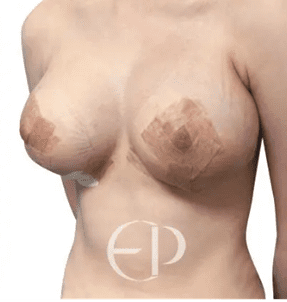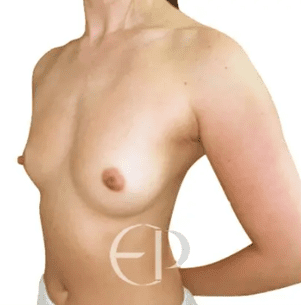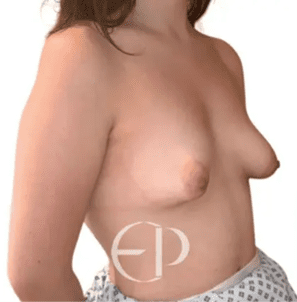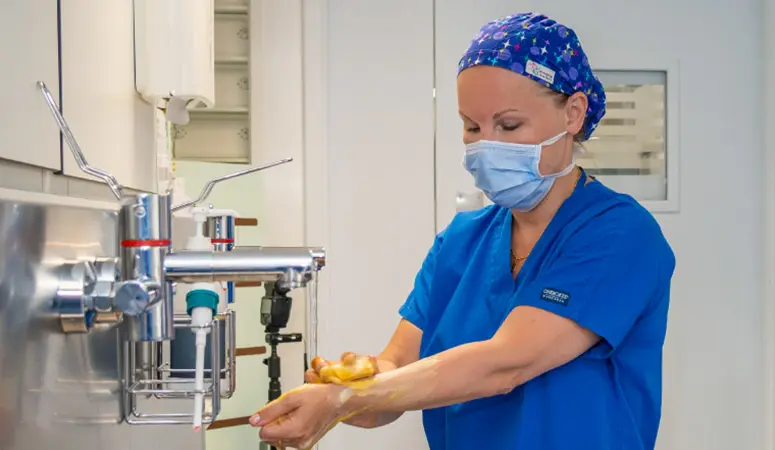
Who is eligible for tuberous breast surgery? Choose the correct surgery for your breast concern.
Published by
Elena Prousskaia
Each breast concern looks different, patient to patient, so a generic breast surgery approach is not helpful. It is particularly important to identify if you have a tuberous breast deformity since these are corrected using a specialist procedure. Sometimes it can be challenging to determine whether you need a tuberous breast correction.
This article explains what features a plastic surgeon will use to identify tuberous breasts and how to distinguish between small and tuberous breasts. We will also discuss whether getting a tuberous breast correction is the best option for you and who might not be eligible.
Click on one of the links to jump to that section
- What qualifies as a tuberous breast deformity?Learn about the characteristics of tubular breast syndrome. Do you really have them?
- What is the difference between tuberous and small breasts?Do you need a tuberous breast correction or a breast augmentation, choose the correct procedure.
- Should you get tuberous breast surgery?Consider your budget and whether you want tubular breast surgery for personal reasons.
- What are the options for tuberous breast correction?We explore the plastic surgery procedures to correct a tuberous breast.
- Who can get tuberous breast surgery?Not everyone can get tuberous breast correction surgery; check your eligibility now.
What qualifies as a tuberous breast deformity?
It is a good idea to go into a breast surgery consultation with an understanding of the type of procedure you want and need; this way, you are prepared for the outcome. You may be eligible for a tuberous breast correction if you have one or several of these symptoms. The severity of symptoms differs for each patient.
- Conic, cylindrical or oval breast shape
- Lack of breast volume, specifically in the lower portion of the breast
- Skin deficiency underneath the areolas
- Breast drooping
- Bulging areolas
- Small breast base
- An Elevated inframammary fold
- Constricted breast tissue (limited peripheral breast development)
- Breast asymmetry
Disclaimer: tuberous breasts may only display a single characteristic; conversely, you may display several without tuberous breast syndrome.
What is the difference between tuberous and small breasts?
Tuberous breast deformities are diagnosed symptomatically, and there is often crossover with other breast concerns such as sagging breasts, east-west breasts, wide-set breasts, breast asymmetry or large areolas. Small breasts can sometimes be mistaken as tuberous breasts and vice versa. It is essential to distinguish between these two concerns so that you visit the right plastic surgeon.
Small breasts share characteristics with tuberous breasts, including a lack of breast volume, conic breast shape, underdevelopment (breast hypoplasia) and asymmetry. Also, the areolas can appear relatively large due to smaller breast size.


A specialist plastic surgeon can identify whether you have the condition, but here are some ways to differentiate tuberous breasts from small breasts. Tuberous breasts may have the following features:
- A skin deficiency underneath the areolas can lead to downward pointing nipples or nipples that sit at a low point on the breasts.
- Bulging areolas – you may feel excess breast tissue around the nipple. Puffy nipples can suggest that the nipple-areola complex has been herniated.
- A small breast base – you might have breasts that sit low on your chest, with a small circumference around the breast tissue; this is often different from being flat-chested. You could also have wide-set or east-west breasts as a result.
- Severe asymmetry is common in developing breasts, but if you experience severe breast asymmetry and any other symptoms, you may have tuberous breasts.
Should you get tuberous breast surgery?
Getting a tubular breast correction should always be a personal decision. You should never get cosmetic surgery as a result of external pressure. If your confidence is significantly affected by your breast’s appearance and you can afford specialist treatment, then you should consider corrective surgery.
A tuberous breast deformity can often severely impact self-esteem, but reconstructive surgery is not as straightforward as breast augmentation surgery, for example. You need to think carefully about this tuberous breast correction; manage your procedure & recovery expectations; what aesthetic results are you looking for? You must choose a specialist, so make sure you can afford this.

If you are worried about whether your breasts can be fixed, Dr Elena Prousskaia specialises in tuberous breast corrections on a broad range of breast shapes. Small breasts, asymmetrical breasts, or severely deformed breasts can be treated using the right approach.
What are the options for tuberous breast correction?
Due to the nature of the tuberous breast deformity, a unique approach is taken to prevent a recurrence after a correction. In most cases, excessive collagen deposits surrounding the breasts must be disturbed. Without this stage, the breast tissue can remain constricted.
Once the breast tissue is remodelled, you can choose to have any of the following procedures:
- Breast augmentation(may require tissue expander)
- Nipple/areola surgery (breast implant-free)
- Breast reconstruction (breast implant-free)
- Breast lift (breast implant-free)
- Male breast reduction
When you have your consultation, your surgeon will recommend the best surgical approach; you must consider your desired results and the possible scarring from the tubular breast correction. Common scars include round block (around the areola), periareolar (underneath the areola), vertical scar (from the base of the areola to the inframammary fold/breast crease), or a combination of these.
Who can get tuberous breast surgery?
For safety reasons, we outline eligibility requirements for all our breast surgeries.
If you are overweight, with a BMI of 32-35, we will decide whether you are eligible for this procedure after meeting you. BMI is not always an accurate representation of whether someone is overweight or obese, so if you are borderline obese, we will make a judgement call. If you have a BMI over 35, we may recommend losing weight before returning for the procedure.
We strive for an inclusive service; however, being overweight increases your risk of surgical complications significantly. For the same reason, at your consultation, we ask you to be transparent about your health status; diabetes and smoking can increase your plastic surgery risk and affect recovery.
We only offer breast surgeries to patients over the age of 18. A tuberous breast correction surgery will leave permanent changes, and there is always a risk of complications. Before making permanent changes to your body, you must be mature enough to understand the possible risks.
Book a consultation to begin exploring your options.
What to read next?
What are the different types of tuberous breasts
How can you fix tuberous breasts?
Sources
- Tuberous Breast: A New Approach
- The tuberous breast deformity: classification and treatment
- Tuberous Breast: Revised Classification and a New Hypothesis for its Development
- Central Mound Mastopexy for the Correction of Tuberous/Tubular Breast Deformity
- Review of Tuberous Breast Deformity: Developments over the Last 20 Years
- Tuberous breast: Morphological study and overview of a borderline entity
- The Impact of Obesity on Breast Surgery Complications
- Evaluation of Preoperative Risk Factors and Complication Rates in Cosmetic Breast Surgery
Share this article
Back to Advice Centre















